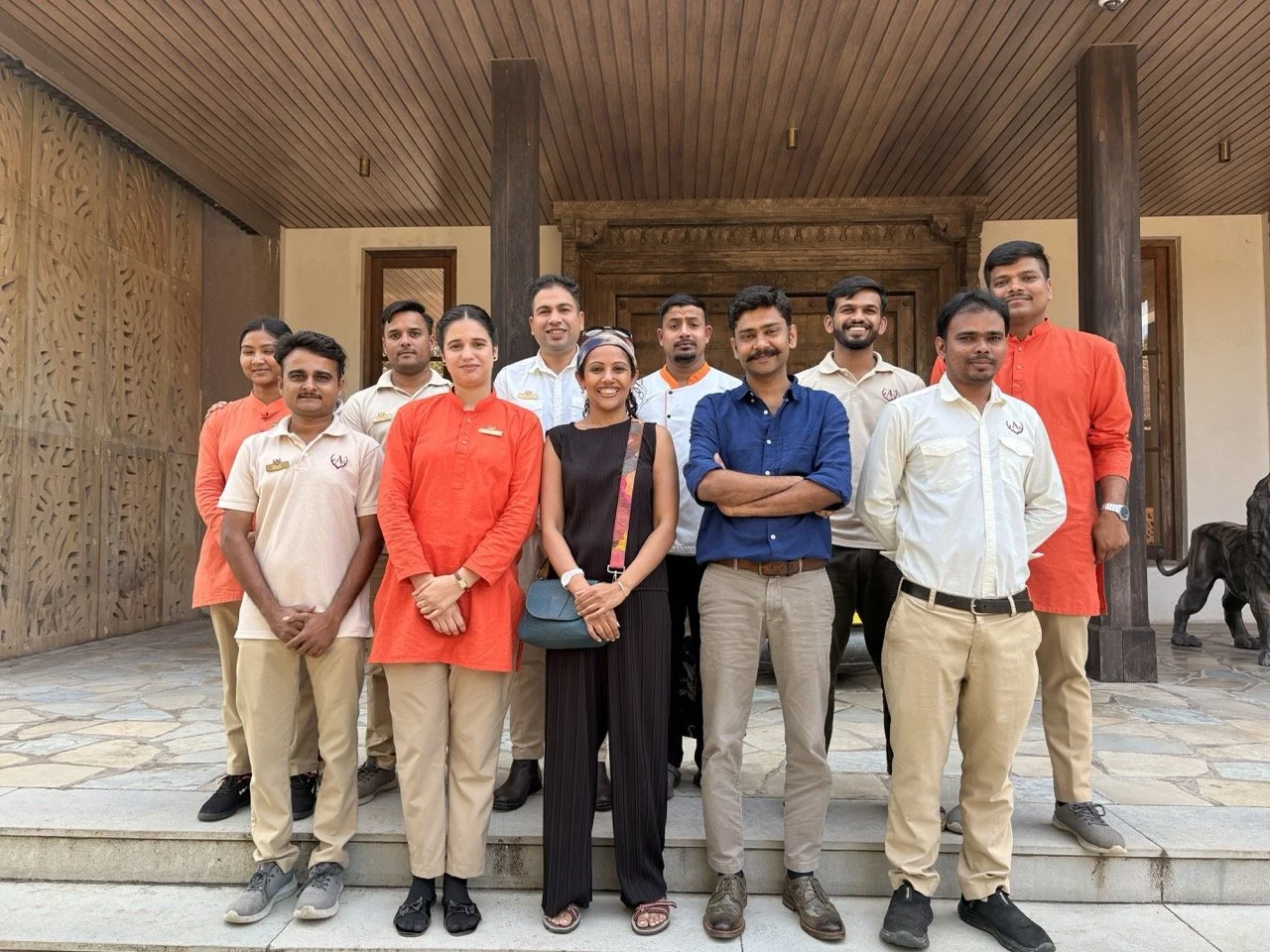Ingredient Ideology | Tempting & Delectable Chutney’s to Relish By: Dr. Kaviraj Khialani- Celebrity Master Chef.
/Introduction to Chutney’s:
Chutney is a flavorful Indian condiment made from fruits, vegetables, herbs, and spices. It comes in various types:
Ingredients: Typically includes fruits or vegetables, spices, acidic agents, and sweeteners.
Preparation: Can be raw or cooked, resulting in chunky or smooth textures.
Flavor Profiles: Sweet, spicy, tangy, or herb-based.
Pairing: Served with Indian dishes, snacks, and more.
Preservation: Some chutneys can be preserved.
Regional Variations: Differ by region and culture, offering a wide range of flavors and ingredients.
How Chutney’s Enhance the Flavor of Foods?
Chutney enhances the flavor of foods in several ways:
Balancing Flavors: Chutneys often combine sweet, sour, spicy, and savory elements, creating a harmonious balance that complements the main dish.
Contrasting Textures: The chunky or smooth texture of chutney adds a contrasting element to the dish, enhancing the overall mouthfeel and dining experience.
Acidity: Chutneys with ingredients like tamarind or vinegar provide acidity, which can cut through rich or fatty flavors, refreshing the palate.
Heat and Spice: Spicy chutneys add a kick of heat that awakens the taste buds and adds complexity to the meal.
Aromatics: Herb-based chutneys, like mint or cilantro, provide a burst of fresh aroma and flavor, elevating the overall taste of the dish.
Customization: Chutneys allow diners to customize their meals, adding as much or as little as they desire to suit their personal taste preferences.
Pairing: Chutneys are designed to complement specific dishes. They are often tailored to pair perfectly with particular foods, enhancing the overall dining experience.
Different types of Chutney’s:
Chutneys come in various forms based on their consistency and preparation:
Dry Chutney: This type of chutney is usually powdered and lacks the liquid component. It's often made by roasting and grinding ingredients like lentils, spices, and coconut. Dry chutneys are typically used as a seasoning or condiment.
Semi-Dry Chutney: These chutneys have a slightly moist or paste-like consistency. They are usually made by blending ingredients without too much added liquid. Examples include tomato chutney and onion chutney.
Wet or Liquid Chutney: These chutneys have a liquid or sauce-like consistency. They are made by blending ingredients with added liquid or by cooking and then blending. Examples include mint chutney and tamarind chutney.
Pickled Chutney: These chutneys are preserved by pickling in oil or vinegar. They have a longer shelf life and are typically made with oil, spices, and vegetables or fruits.
6 Special Chutney’s from Various States of India:
1. Tomato Chutney (Andhra Pradesh):
Ingredients:
- 4 ripe tomatoes
- 2-3 dried red chilies
- 1/2 tsp mustard seeds
- 1/2 tsp cumin seeds
- 1/2 tsp urad dal (black gram)
- 1/2 tsp chana dal (split chickpeas)
- A pinch of asafoetida
- 1-2 tbsp oil
- Salt to taste
Method:
1. Heat oil in a pan and add mustard seeds. When they splutter, add cumin seeds, urad dal, and chana dal.
2. Add dried red chilies and asafoetida. Sauté for a minute.
3. Add chopped tomatoes and cook until they become soft and pulpy.
4. Cool the mixture, then blend it into a smooth paste. Add salt to taste.
2. Coconut Chutney (Kerala):
Ingredients:
- 1 cup grated coconut
- 2-3 green chilies
- A small piece of ginger
- 1/2 cup yogurt
- Salt to taste
- For tempering: oil, mustard seeds, curry leaves, and urad dal
Method:
1. Blend coconut, green chilies, ginger, and yogurt to a fine paste. Add salt.
2. Prepare tempering by heating oil, adding mustard seeds, urad dal, and curry leaves. Pour over the chutney.
3. Peanut Chutney (Gujarat):
Ingredients:
- 1 cup roasted peanuts
- 2-3 green chilies
- 1/2 tsp cumin seeds
- A small piece of tamarind
- Salt to taste
Method:
1. Blend roasted peanuts, green chilies, cumin seeds, and tamarind into a coarse paste.
2. Add salt to taste.
4. Pudina Chutney (Punjab):
Ingredients:
- 1 cup fresh mint leaves
- 1/2 cup fresh coriander leaves
- 2-3 green chilies
- 1 small onion
- 1 tsp lemon juice
- Salt to taste
Method:
1. Blend mint leaves, coriander leaves, green chilies, onion, and lemon juice into a fine paste.
2. Add salt to taste.
5. Date and Tamarind Chutney (Rajasthan):
Ingredients:
- 1 cup pitted dates
- 1/2 cup tamarind pulp
- 1/2 cup jaggery
- 1 tsp cumin powder
- 1/2 tsp red chili powder
- Salt to taste
Method:
1. Combine dates, tamarind pulp, and jaggery in a saucepan. Cook with some water until they soften and form a thick paste.
2. Add cumin powder, red chili powder, and salt. Simmer for a few more minutes until the chutney thickens.
6. Thecha (Gunpowder chutney) (Maharashtra)
Ingredients:
1 cup dried red chilies
1/2 cup roasted peanuts
1/4 cup roasted sesame seeds
4-5 cloves of garlic
A small piece of tamarind
Salt to taste
2-3 tablespoons oil
Method:
Roasting: Dry roast the dried red chilies in a pan until they become crisp. Set them aside to cool.
Blending: In a blender or food processor, combine the roasted chilies, roasted peanuts, roasted sesame seeds, garlic, tamarind, and a pinch of salt.
Grinding: Grind the mixture until it reaches a coarse, grainy texture. Don't make it too fine; you want to retain some texture and crunch.
Tempering: In a separate pan, heat the oil. Add a bit of mustard seeds and curry leaves for added flavor. Once they start to sizzle, pour this tempering over the chutney and mix well.
These chutneys from various Indian states offer a wide range of flavors and can be served as condiments or accompaniments with different dishes. Enjoy exploring the diverse culinary traditions of India!
Conclusion :
Chutneys are a versatile and flavorful addition to Indian cuisine, enhancing the taste of various dishes. They come in different types, including dry, semi-dry, wet, and pickled chutneys, offering diverse textures and flavors. Each region in India has its unique chutney recipes, utilizing local ingredients and culinary traditions. Whether it's the fiery Gunpowder chutney from Maharashtra or the tangy Tamarind chutney from Punjab, chutneys play a significant role in elevating the overall dining experience, adding a burst of taste and depth to meals.













